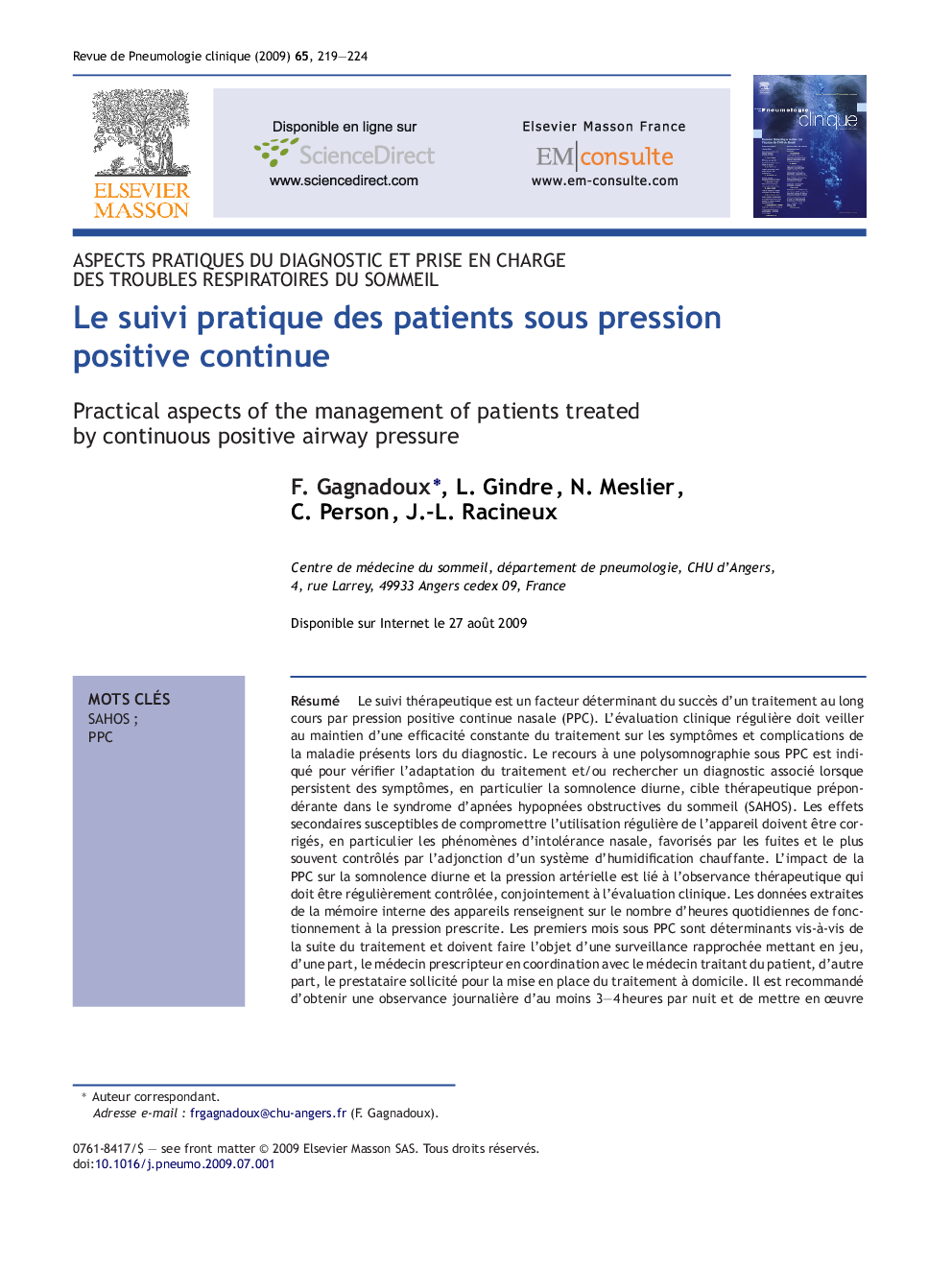| Article ID | Journal | Published Year | Pages | File Type |
|---|---|---|---|---|
| 3419812 | Revue de Pneumologie Clinique | 2009 | 6 Pages |
Abstract
The therapeutic follow-up is a decisive factor of the success of a long course treatment by continuous positive airway pressure (CPAP). The effectiveness of this treatment on both symptoms and complications must be regularly verified. Polysomnography with CPAP could be necessary in order to check out the efficacy of this treatment and/or to find an associated diagnosis when symptoms persist, particularly a diurnal drowsiness, which is the main therapeutic target in obstructive sleep apnea syndrome (OSAS). The secondary effects that are likely to compromise the compliance of CPAP treatment must be resolved, particularly the nasal intolerance, which are enhanced by mask leakages and often corrected by using heated humidity with CPAP delivery systems. The efficacy of CPAP on both diurnal drowsiness and hypertension is related to the compliance of this treatment which must be regularly verified, at the same time that the clinical evaluation. The data obtained from the device's memory give information concerning the number of hours day to day, in which the CPAP device was running at the prescribed pressure. The first months with CPAP are decisive to avoid a failure of the treatment at long term. This period must be closely monitored by both the physician and the home care provider. Patients should use the CPAP at least 3-4Â h by night and all possible means should be used to obtain a maximal compliance. Therapeutic educational programs could help to reach this goal.
Related Topics
Health Sciences
Medicine and Dentistry
Infectious Diseases
Authors
F. Gagnadoux, L. Gindre, N. Meslier, C. Person, J.-L. Racineux,
